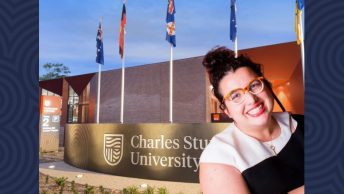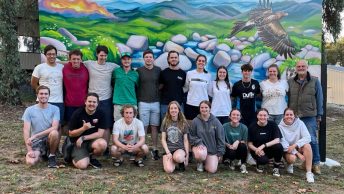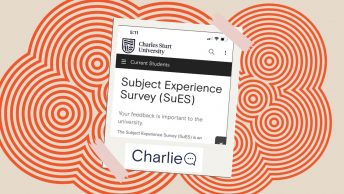Written by Katherine Donges
On Friday the 20th May, I attended a ‘Native Bee Hotel Workshop and Native Pollinator Talk’ at the Charles Sturt Bathurst campus. It was organised by Charles Sturt’s Sustainability team and led by Dr Megan Halcroft.
While I’m fascinated by the fury, little, buzzing insects, I was a little apprehensive about being stung by a bee as I usually suffer a localised reaction to them. And at 7 months pregnant I didn’t want to deal with that! However, this was not to be the case, and I could take my ‘nursing student’ hat off and be a part of the activities.
Learning while having fun in the sun
Commonly when we think of bees, we think about the yellow and black honey bees. But these are not native bees. I was impressed to learn about the differences between these types of bees and just how important native bees are to the pollination of our flora.
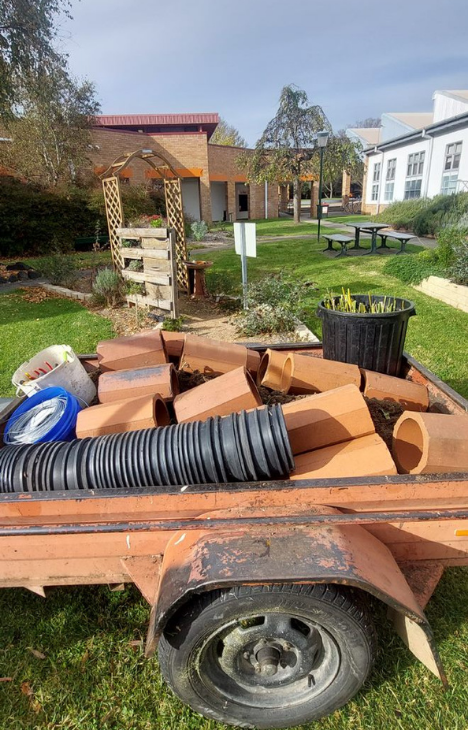
Native bees are quite different to the honey bee and honestly, I found the ones with blue stripes to be quite beautiful. The way that native bees treat and interact with our flora is simply amazing, especially given the size of the small insect. Native bees are stingless and are not aggressive. They don’t have a big hive and their sole mission is not just about making honey (they actually don’t produce very much), so no need for them be defensive – thankfully!
We were privileged enough to not only learn about the natural habitat of native bees, but were also able to make a bee hotel. Native bees have quite a different nesting set up to honey bees (or wasps). We made two different types of nests. The first type was getting fresh bamboo (not from a hardware store as they have often been sprayed with chemicals) and cutting the lengths to about 20cm long, with the ‘knot’ of the bamboo in the middle. As bamboo is hollow, this allows for bees to climb in either end. We grouped a small handful of cut bamboo and tied it onto the branch of a tree. The other type of bee hotel we made was with terracotta hexagonal tubes. Here we got to ram in some earth (got out some assessment writing frustration here) and then in one end we poked a few holes about 1cm wide and 4cm deep into the rammed dirt.
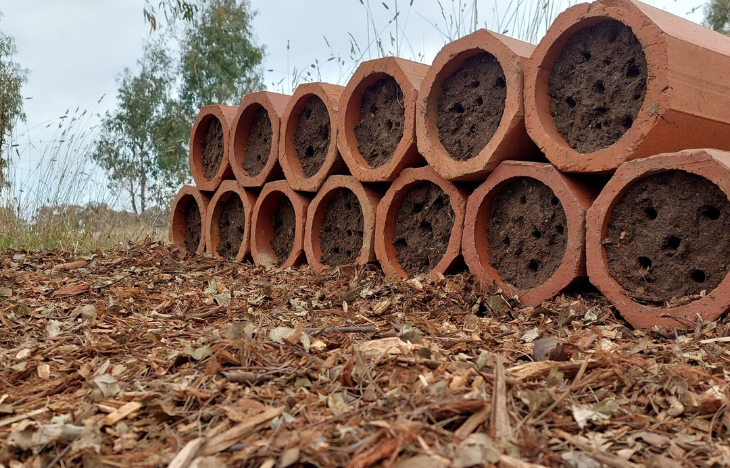
As you can see from the photo, the terracotta tubes were stacked on and next to each other. While honey bees come home to a big hive with their queen bee, native bees are a bit like ‘introverted neighbours’, they like to live near each other, but not socialise too much. We were explained how to attract the native bees to our area by planting flora that attracts them. It was important to learn that the honey bee (or wasps) would not be attracted or interested to the native bee hotel that we made.
Dr Megan Halcroft bought in a wasp nest to show just how big and close they like to nest, and how the native nests differ too much and not of any use to them (thankfully!). While the bee hotel is not located within the pollinator garden, it is located down behind the engineering building, near to the creek. Hopefully one day they will be able to be move into the pollinator garden to compliment this area.
Time to get involved

This day was a great opportunity to mix with people from different backgrounds as we all grew in our knowledge of bees and their environment together. Diversity of who we interact with is an important skill to learn, especially as a nursing student where I will care for patients from all different walks of life. Its great to learn about different areas such as native bees, as this allows for great ‘ice breaker’ conversations with patients.
To talk about something that is unusual and interesting as this can help ease them into the healthcare space as often patients are anxious about their health in these kinds of health care environments. For me personally, I will now be more aware of the flora within my own backyard and how to set up spaces that will look after and protect such an important member of our food chain- our native bee plant pollinators.





